Introduction to the Importance of On-Page SEO and Its Impact on Ranking
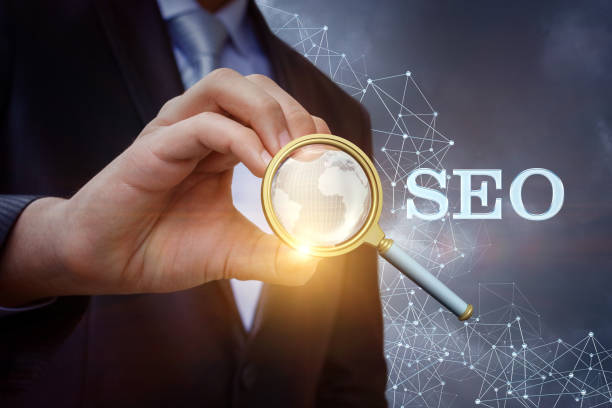
In today’s highly competitive world, simply having a website is not enough; you must ensure that users and search engines can find it.
This is where the role of #On-Page_SEO or #On-Page_Optimization becomes prominent.
#On-Page_SEO refers to a set of actions you perform within your website to improve its ranking in search engine results.
These actions include content optimization, site structure, keywords, and technical aspects.
The main goal of On-Page SEO is to help search engines better understand the page’s content and its relevance to user queries.
The better search engines can understand your content, the higher your website’s chances of appearing on the first pages of search results.
Many webmasters and business owners mistakenly believe that SEO is limited only to external link building, whereas internal site optimization forms the foundation of any successful SEO strategy.
Without a strong foundation of On-Page SEO, even the best backlinks may not have the expected impact.
This specialized field requires a systematic approach and attention to detail.
In this comprehensive guide, we will fully cover various aspects of On-Page SEO and guide you step-by-step on the path to improving your website’s ranking.
Understanding and applying these educational principles will lead you to success in the online world.
Are you tired of your company’s website not being seen as it deserves, losing potential customers? Solve this problem forever with professional and effective website design by Rasaweb!
✅ Increase brand credibility and gain customer trust
✅ Attract targeted sales leads
⚡ Contact us now for a free consultation!
Keyword Research: The First Step in Effective On-Page SEO
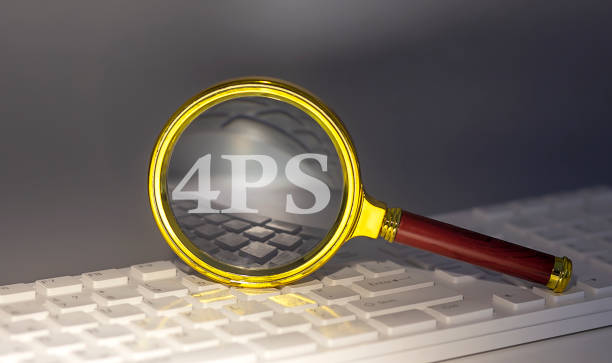
Keyword research is the cornerstone of any successful On-Page SEO strategy.
Before you even write a single line of content, you need to know what your users are looking for and what phrases they use to search for your information, products, or services.
This guiding process helps you create content that precisely addresses the needs of your target audience.
Various tools are available for keyword research, including Google Keyword Planner, Ahrefs, Semrush, and Moz Keyword Explorer.
Using these tools, you can identify search volume, competition level, and related keywords.
Your goal should be to find keywords with appropriate search volume and manageable competition.
In addition to main keywords (head terms), paying attention to long-tail keywords is also highly important.
These longer phrases usually have lower search volume but more accurately reflect user intent and have higher conversion rates.
For example, instead of “SEO”, use “complete on-page SEO training for beginners”.
This analytical approach allows you to answer more complex questions and provide more specialized content.
Also, analyzing keywords for which competitors rank can provide new ideas for you.
Remember to naturally and purposefully incorporate keywords into your title, meta description, headers, and the main body of your content to help search engines understand the page’s topic and strengthen your On-Page SEO.
Content Optimization: The Master Key to On-Page SEO
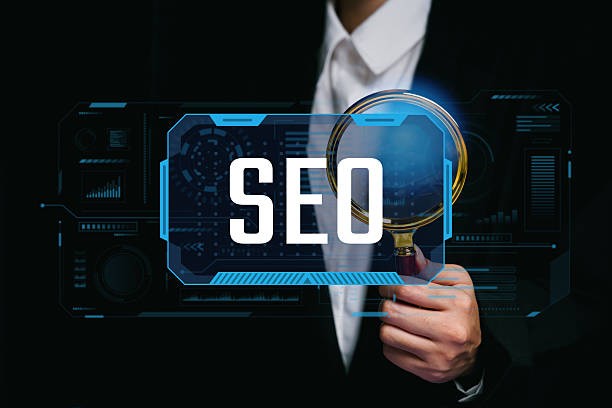
Content is king; this statement holds true in the world of SEO more than ever.
Content optimization is one of the most important aspects of On-Page SEO that directly impacts search engines’ understanding of the page’s topic and also user experience.
Your content must be valuable, comprehensive, and unique.
Naturally incorporating primary and secondary keywords into the text, without excessive repetition (keyword stuffing), is a basic principle.
Content structure is also very important; using appropriate headings (H1, H2, H3, etc.) helps search engines understand the structure and importance of different sections of the text.
This is a practical guide for arranging your content.
Furthermore, educational content should answer user questions and add value to them.
Adding relevant images, videos, and infographics to content not only makes it more appealing but can also help improve On-Page SEO, as it increases user dwell time on the page.
Your content should be engaging enough to attract users and encourage them to read more.
Use clear and concise language and avoid long, complex sentences.
Regularly reviewing and updating old content is also an important principle in maintaining and improving rankings in search results.
This is a specialized action that allows you to keep users and Google bots entertained and engaged with always fresh content.
| Element | Description and Importance | Optimization Tips |
|---|---|---|
| Keywords | Understanding user intent and helping search engines for topical ranking. | Natural usage, avoiding keyword stuffing, LSI keywords. |
| Heading Structure (H1-H6) | Content organization, improved readability and user experience, better understanding of the topic by search engines. | One H1 per page, logical use of H2-H6 for subtitles. |
| Content Quality and Comprehensiveness | Fully answering user queries, building trust and authority. | Unique content, appropriate length, genuine added value. |
| Images and Media | Increased visual appeal, improved engagement rate, increased dwell time. | Compression, descriptive Alt Text, relevant file name. |
The Importance of Title Tags and Meta Descriptions in Attracting Clicks
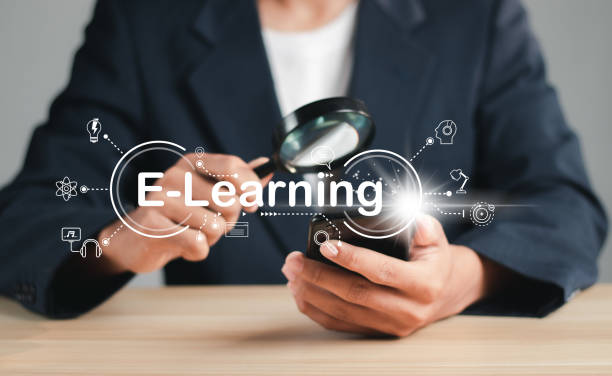
Title Tags and Meta Descriptions, although not directly impacting ranking, play a crucial role in Click-Through Rate (CTR) and, consequently, in On-Page SEO.
The title tag is the text displayed at the top of the browser and is the most important visible element in search results.
This tag should include the main keyword and accurately and attractively summarize the page’s content.
The ideal length for a title tag is usually between 50 and 60 characters to be fully displayed in search results.
Writing a strong title tag is a specialized art that requires creativity and an understanding of user behavior.
Meta Description is a short description that appears below the title tag in search results.
This text is a golden opportunity to convince users to click on your link.
Although Google does not always use your meta description and may rewrite it based on the user’s query, writing an attractive and relevant meta description is highly important.
This description should include keywords, a Call to Action, and be enticing to encourage the user to click.
The appropriate length for a meta description is between 120 and 160 characters.
Both of these elements directly influence the user’s decision to click, and therefore, optimizing them is an inseparable part of your On-Page SEO strategy.
A good meta description can create intriguing content and pique user curiosity.
Are you falling behind in the competition with large online stores?
Rasaweb will take your business online with professional e-commerce website design and increase your market share!
✅ Increase brand credibility and customer trust
✅ Easy shopping experience leading to more sales
⚡ Take action now for a free website design consultation!
URL Structure and Internal Linking: Pillars of On-Page SEO

URL (Uniform Resource Locator) structure and Internal Linking are two vital elements that not only help search engines crawl and index your website better but also improve user experience.
In the context of On-Page SEO, a URL should be short, descriptive, and include the page’s main keyword.
Avoiding complex and unintelligible characters in the URL makes it more readable and user-friendly.
For example, instead of “yoursite.com/?p=123”, use “yoursite.com/comprehensive-on-page-seo”.
This is a simple but effective tip that significantly impacts URL readability and topic understanding by search engines.
Internal linking means linking different pages of your website to each other.
This is very important for On-Page SEO for several reasons:
Firstly, it helps search engines understand your website’s structure and identify the importance of different pages.
Secondly, it distributes Link Equity throughout your website.
Thirdly, it improves user experience, as users can easily access related information.
When internal linking, use descriptive and keyword-relevant Anchor Text for the destination page.
For example, instead of “click here”, use “comprehensive on-page SEO guide”.
A strong internal linking strategy connects your pages and, as a specialized strategy, significantly helps increase the overall power of your website’s On-Page SEO.
Optimizing Images and Visual Content for On-Page SEO
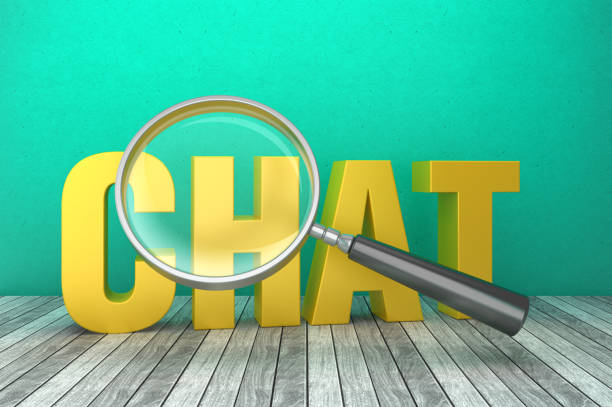
Images and visual content play an increasing role in attracting users and improving their experience on a website.
But for these elements to help your On-Page SEO, they must be properly optimized.
The first and most important step is image compression.
High-volume images can severely reduce page load speed, which is one of Google’s important ranking factors.
Using appropriate image formats (like WebP for new images and JPEG for photos) and online compression tools can reduce file sizes without significant quality loss.
The second important point is the use of Alt Text for images.
Alt Text provides a brief and accurate description of the image content, displayed if the image fails to load or for visually impaired users (via screen readers).
Search engines also use Alt Text to understand the image content and its relevance to keywords.
Alt Text should include the page’s main keyword or related keywords, but avoid excessive repetition (keyword stuffing).
The image file name is also important; use descriptive and keyword-inclusive names (like “on-page-seo-image-1.jpg” instead of “IMG_001.jpg”).
Also, consider the appropriate image dimensions and avoid excessively large images.
This comprehensive guide will help you optimize your visual content and significantly contribute to improving your website’s On-Page SEO.
Another specialized tip is to use Lazy Loading, which loads images only when the user scrolls to them, improving initial page speed.
Technical Aspects of On-Page SEO Beyond Content
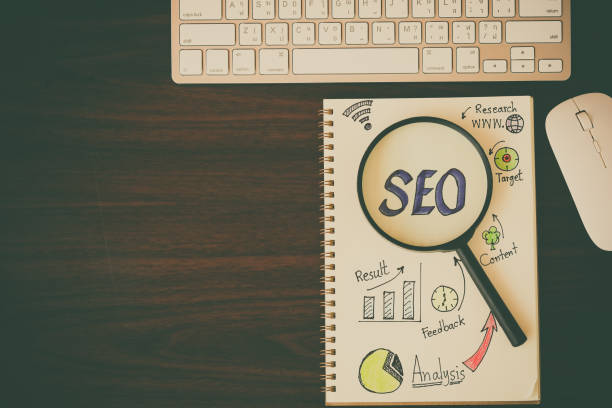
On-Page SEO is not limited to content and keywords; technical aspects also play a vital role in your website’s visibility to search engines.
Page Speed is one of the most important ranking factors.
Google prioritizes websites that load quickly because they provide a better user experience.
To improve speed, you can optimize images, use browser caching, compress CSS and JavaScript files, and utilize a CDN (Content Delivery Network).
This is a complete explanation of how to increase site speed.
Mobile-friendliness is also a necessity.
Given the increasing use of mobile devices for searching, Google prefers websites that offer a good mobile user experience.
Responsive Design is the best way to ensure your website’s compatibility with various devices.
Using Schema Markup can also help your On-Page SEO.
Schema are structured codes that help search engines better understand your page’s content and can lead to the display of Rich Snippets in search results, which increases the click-through rate.
Robots.txt and Sitemap XML files are also important technical tools that help search engines correctly crawl and index your website.
These specialized aspects form the foundation of a strong On-Page SEO.
| Technical Factor | Importance for SEO | Improvement Solutions |
|---|---|---|
| Page Load Speed | User experience, lower bounce rate, better ranking. | Image compression, caching, minifying code, CDN. |
| Mobile Compatibility | Importance of Mobile-First Indexing, increased mobile traffic. | Responsive Design, testing with Google Mobile-Friendly Test. |
| Security (HTTPS) | Ranking factor, user trust, privacy protection. | Installing and activating SSL certificate. |
| Schema Markup | Helping search engines understand content, rich snippets, higher CTR. | Using JSON-LD for various content types (product, article, review). |
User Experience (UX) and Its Connection to On-Page SEO
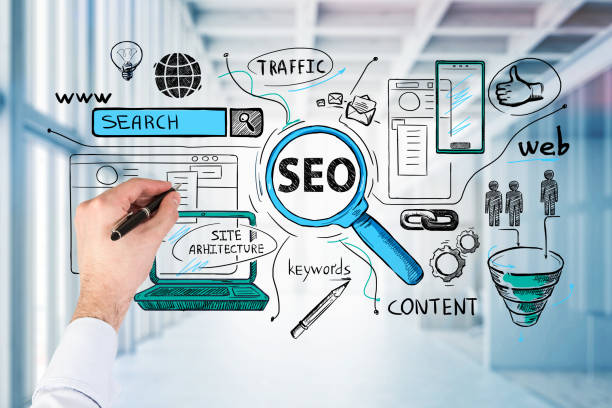
In recent years, Google has placed great emphasis on User Experience (UX) and has made it one of the indirect but highly influential ranking factors.
In fact, an excellent user experience automatically contributes to the improvement of your On-Page SEO.
When users enjoy your website, they spend more time on it (increasing Dwell Time), view more pages (reducing Bounce Rate), and are likely to return.
All these signals indicate to search engines that your content is valuable and relevant.
Key UX elements that impact SEO include Intuitive Navigation, attractive visual design, content readability, and clear calls to action.
A website that users can easily navigate and find the information they need will naturally perform better in search.
For example, clear menus, clickable buttons, and a user-friendly site map are important navigation elements.
Also, ensuring your website is free from intrusive pop-ups and excessive advertisements helps improve UX.
This is an analytical and somewhat amusing approach to how human interactions can affect complex search engine algorithms.
Google, with the introduction of Core Web Vitals, has directly incorporated UX metrics into its ranking factors.
Therefore, attention to user interface design and user experience is an inseparable part of any successful On-Page SEO strategy, and on-page optimization is directly and indirectly affected by these factors.
How much does losing business leads due to an unprofessional site cost you? Solve this problem forever with professional corporate website design by Rasaweb!
✅ Increase credibility and trust of potential customers
✅ Easier attraction of new business leads
⚡ Get a free consultation now!
Monitoring and Data Analysis for Continuous On-Page SEO Optimization
![]()
SEO is not a one-time process; it requires continuous monitoring and analysis.
To ensure the success of your On-Page SEO strategy, you need to regularly monitor your website’s performance and analyze data.
Tools like Google Search Console and Google Analytics provide invaluable information.
Google Search Console helps you see your website’s performance in search results, identify crawling and indexing issues, and review reports on keywords, clicks, and impressions.
Using this specialized tool, you can see which of your pages are ranking and which need further optimization.
Google Analytics also provides more comprehensive information about user behavior on your website, including bounce rate, dwell time, pages visited, and traffic sources.
By analyzing this data, you can identify the strengths and weaknesses of your user experience and make more informed decisions to improve on-page optimization.
As a guide, paying attention to the Conversion Rate is also very important.
Even if you have high traffic, if users do not reach your goals (such as purchasing or signing up), your SEO efforts will be futile.
Therefore, comprehensive analysis of this data and making necessary changes based on it are key to sustainable success in On-Page SEO.
This continuous monitoring and analytical approach allow you to answer users’ intriguing questions and keep the site’s performance always optimized.
Common On-Page SEO Mistakes and How to Avoid Them
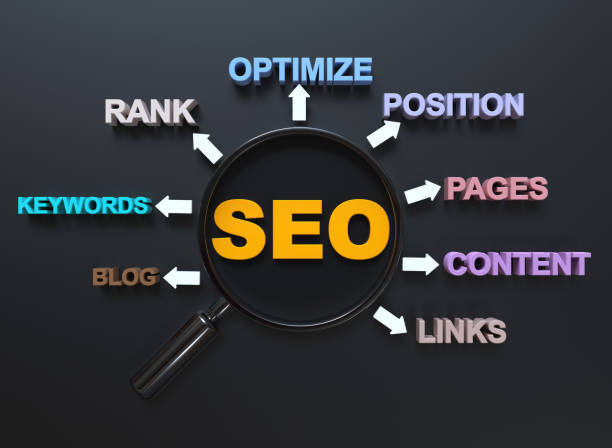
Even with the best intentions, mistakes can occur in On-Page SEO that can harm your website’s ranking.
Understanding these common mistakes and avoiding them is an important part of any successful On-Page SEO strategy.
One of the most common errors is Keyword Stuffing.
Unnatural and excessive use of a keyword not only damages user experience but can also be identified as spam by Google and lead to penalties.
Another mistake is Thin or Duplicate Content.
Google prefers unique and high-quality content.
Publishing duplicate or very short and worthless content harms your site’s credibility and can negatively impact your ranking.
Also, neglecting image optimization (ignoring Alt Text and large file sizes), which was mentioned earlier, is a common error.
Ignoring the importance of page load speed and mobile compatibility are also common mistakes.
In today’s world, a website that is slow or does not display correctly on mobile is doomed to fail.
Weak or non-existent internal linking can also prevent search engines from discovering and indexing all pages of your site.
Not updating old content and disregarding Google Analytics and Search Console analyses are also mistakes that hinder the sustainable growth of On-Page SEO.
By avoiding these errors and following the guidelines provided in this article, you can more effectively improve your on-page optimization and pave the way for success.
This is a complete explanation of the challenges ahead.
Frequently Asked Questions
| Row | Question | Answer |
|---|---|---|
| 1 | What is On-Page SEO? | On-Page SEO refers to a set of actions performed within a website (on its pages) to improve its ranking in search engine results. This includes optimizing content, site structure, and HTML code. |
| 2 | Why is On-Page SEO important? | On-Page SEO helps search engines better understand page content and determine whether that page is relevant and valuable for user searches. This better understanding leads to higher rankings. |
| 3 | What is the first and most important step in On-Page SEO? | Keyword Research is the most important initial step. By finding suitable keywords, targeted content relevant to user needs can be produced. |
| 4 | What is the role of the Title Tag in On-Page SEO? | The title tag is one of the most important ranking factors and should include the main keyword. This tag is displayed as the page title in search results and influences the click-through rate (CTR). |
| 5 | What is the importance of Meta Description? | The meta description does not directly affect ranking, but by providing an attractive summary of the page’s content in search results, it can encourage users to click, thereby increasing the click-through rate (CTR). |
| 6 | Why is using headings (H1, H2, etc.) important in content? | Headings help structure content and improve readability for users and search engine crawlers. Using keywords in headings also aids search engines in better understanding the topic. |
| 7 | What does Image Optimization in On-Page SEO include? | It includes compressing images to reduce size, using descriptive and relevant file names, and filling in the Alt tag (alternative text) with relevant keywords to help search engines understand the image content. |
| 8 | What is Internal Linking in On-Page SEO? | Internal linking refers to creating links between different pages of a website. This helps distribute page authority (Link Equity), improve user experience, and assist search engine crawlers in discovering new pages. |
| 9 | Why is Page Speed important for On-Page SEO? | Page load speed is a direct ranking factor and significantly affects user experience. Slow pages can lead to an increased bounce rate and reduced user engagement. |
| 10 | What role does quality content play in On-Page SEO? | Quality, comprehensive, unique, and valuable content for the user is the core of On-Page SEO. This content not only attracts and retains users but also sends positive signals to search engines, helping achieve better rankings. |
And other advertising services of Rasaweb Advertising Agency
Smart Google Ads: Designed for businesses seeking to analyze customer behavior through marketing automation.
Smart Marketing Automation: A fast and efficient solution for customer behavior analysis focusing on Google Ads management.
Smart Website Development: A fast and efficient solution for increasing website traffic with a focus on attractive UI design.
Smart Custom Software: A combination of creativity and technology to increase click-through rates by utilizing real data.
Smart Content Strategy: Revolutionize click-through rates with the help of attractive UI design.
And over hundreds of other services in internet advertising, advertising consultation, and organizational solutions
Internet Advertising | Advertising Strategy | Sponsored Content
Sources
What is On-Page SEO?
What is SEO?
Types of SEO
The Most Comprehensive Guide to On-Page SEO
? Ready to transform your business in the digital world? Rasaweb Afarin Digital Marketing Agency, with its expertise in professional website design and SEO, offers innovative solutions for your growth and visibility.
📍 Tehran, Mirdamad Street, next to Bank Markazi, Kazeroon Janubi Alley, Ramin Alley, No. 6




